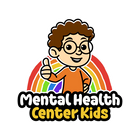|
Key Takeaways:
- Anxiety is a common mental health challenge in children, and early support matters.
- Anxiety worksheets help children recognize, express, and manage anxious thoughts and feelings.
- These worksheets can be used at home, in school, or during therapy to support children’s emotional development.
|
Kids can feel anxiety for many of the same reasons adults do: uncertainty, fear of failure, high expectations, and negative past experiences. But their brains and coping skills are still developing, so it can feel more intense or confusing for them.
Printable anxiety worksheets for kids can be powerful tools to support emotional development and self-regulation. They help children understand their feelings, recognize what triggers their anxiety, and discover healthy ways to calm themselves.
10 Printable Anxiety Worksheet for Kids
Here’s a list of printable anxiety worksheets kids can use at home, in therapy sessions, or in the classroom.
1. Worry Jar Worksheet

The Worry Jar worksheet helps children externalize their anxious thoughts by writing them down and symbolically "storing" them in a worry jar. This activity includes spaces for children to draw or write their worries, color a jar design, and practice the ritual of placing worries away.
The worksheet teaches kids that while worries are normal, they don't have to carry them around all day. Children can schedule specific "worry time" using this tool. It teaches them to compartmentalize their anxious thoughts rather than letting them consume their entire day.
2. Happy Place Worksheet

The Happy Place worksheet encourages children to visualize and describe a place where they feel calm, safe, and peaceful. Whether through drawing or words, kids create a personal mental retreat they can return to when feeling anxious.
This activity strengthens emotional regulation by linking calm feelings to specific imagery. It becomes a grounding tool children can use during difficulties, transitions, or overwhelming situations.
3. Preparing for Anxiety Worksheet

This worksheet guides children in identifying situations that might cause anxiety and coming up with a plan to handle them.
It empowers children to feel prepared rather than surprised by anxiety triggers. With regular use, they can reduce their worries through forward-thinking and problem-solving.
4. Working Through Anxiety Worksheet

The Working Through Anxiety worksheet helps children unpack a recent anxious experience step by step. They explore their negative thoughts about the situation, how their feelings are showing in their body, and how they can respond and calm down.
This process gives kids a sense of control and insight over their emotions. It also reinforces that anxiety can be worked through, not just endured.
5. Anxiety Coping Skills Tracker

This tracking worksheet helps children monitor which coping strategies work best for them in different situations. It includes a list of various coping techniques they can try out, such as taking a break, counting from 1 to 100, and challenging unhelpful thoughts.
They can rate the effectiveness of each coping skill and note when they were used. Over time, this tracker helps children and their caregivers identify patterns and preferred coping methods.
6. Coping Statements for Anxiety Worksheet

This worksheet teaches children to challenge anxious thoughts with more balanced, realistic thinking. It provides examples of coping statements like “This is just a feeling. It will pass.” There are also spaces for children to create their own personalized affirmations.
Practicing positive self-talk helps shift anxious thought patterns. This worksheet provides them with go-to phrases they can use when anxiety strikes.
7. Anxious Thoughts Breakdown Worksheet

The Anxious Thoughts Breakdown worksheet helps children examine their anxious thoughts more objectively. It includes sections for writing down the anxious thought, questions to challenge the thought, and developing balanced and realistic alternative thoughts.
This cognitive restructuring exercise, adapted for children, helps them learn that not all thoughts are facts and teaches them to question the accuracy of their anxious predictions.
8. Letting Go of Anxious Thoughts Worksheet

This worksheet invites children to write or draw their worries on balloons and then symbolically “release” them. It gives them permission to move on from worries instead of holding onto them.
Anxious thoughts often go in circles. Teaching kids to let them go frees up mental space so they can think more clearly and focus on what matters.
9. Physical Symptoms of Anxiety Worksheet

This body awareness worksheet helps children identify where and how they experience anxiety physically. Children can color, or mark where they feel anxiety symptoms like trembling voice, stomachache, or chest tightness.
This way, children can learn to recognize anxiety earlier and implement coping strategies before symptoms become overwhelming.
10. Anxiety in Children Symptoms Checklist

This checklist helps children recognize and name common signs of anxiety they may experience, such as trouble breathing, sweating, or a fast heartbeat. It includes simple, child-friendly language and checkboxes to mark what applies.
The checklist can be used weekly or monthly to monitor patterns and identify triggers. This tool is particularly valuable for communication with healthcare providers by providing kids with the vocabulary to describe their experiences more accurately.
How to Use These Anxiety Worksheets
When choosing anxiety worksheets, make sure to match it with your child’s age and maturity level. For instance, younger kinds may respond well to drawing and coloring based activities, or worksheets that use simple language. While older ones might prefer writing and reflection.
Consider incorporating worksheet time into daily or weekly schedules, such as Sunday evening preparation sessions or brief morning check-ins. Some families find success in creating special worksheet time with comfortable seating, favorite snacks, or calming music to make the experience more appealing.
When worksheets feel safe, calm, and free from pressure, kids are more likely to use them.
When emotional support becomes routine, kids learn that it’s okay to feel anxious sometimes, and that they’re not alone in managing it.
The Bottom Line
Anxiety worksheets help kids make sense of big emotions and learn simple ways to feel better. The ten worksheets in this guide focus on different parts of anxiety, like how it feels in the body, what kinds of thoughts come up, and how to plan ahead for tough situations.
These tools keep kids engaged and teach real-life strategies they can use when things get hard. When used regularly and in a way that fits your child’s age, these can make it easier for kids and adults to talk about mental health.
FAQs About Anxiety Worksheet for Kids
If you’re new to using anxiety worksheets with your child, you might have a few questions. Below are answers to some of the most common concerns about how to use these tools effectively and what to expect.
What age are these anxiety worksheets designed for?
Most are suitable for kids ages 5–12. Younger children may need help reading or writing responses, while older kids can complete them independently.
There are also anxiety worksheets made just for teens. These worksheets use language and examples that match their age and experiences.
How often should my child use these worksheets?
Some worksheets, such as Letting Go of Anxious Thoughts, can be used as needed, whenever your child feels overwhelmed or needs a calming activity. Others, such as Anxiety Coping Skills Tracker, work well on a weekly or monthly basis to track progress.
Worksheets such as Preparing for Anxiety may be helpful before specific events, such as a school presentation or a social situation. What matters most is consistency and letting your child set the pace. You can start with once or twice a week, and allow room to adjust based on what feels helpful and natural for your child.
Can I use these worksheets at home without a therapist?
Yes. These worksheets can be effectively used at home and school by parents, caregivers, and teachers as part of general emotional wellness and anxiety management.
However, if your child's anxiety is severe, persistent, or interfering significantly with daily functioning, school performance, or social relationships, professional support from a counselor, psychologist, or psychiatrist is recommended. These worksheets can complement professional treatment but shouldn't replace it when clinical intervention is needed.






























































